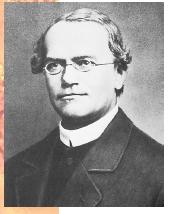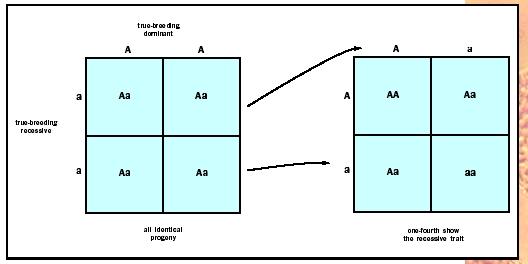Mendel, Gregor Czech geneticist 1822–1884

Gregor Johann Mendel was born on July 22, 1822, in what is now Hyncice, Czech Republic. He entered a monastery in what is now Brno, Czech Republic, and performed a famous and important series of breeding experiments while at the monastery. Mendel died on January 6, 1884, in Brno.
Mendel is often referred to as the father of genetics because his work set the foundation upon which modern biology, and especially genetics, is based. Numerous scientists during Mendel's time were studying the heritability of various traits. However, much of this science was descriptive and qualitative. Mendel's work, as reported in 1866, differed from that of others in four major ways: (1) his choice of material, (2) his careful observations, (3) his mathematical approach to the analysis of the data, and (4) his inductive leap used to explain his results.
In his genetic experiments, Mendel chose garden peas because they had many traits that appeared in two forms, because they grew quickly, and because he could perform both out-crosses (fertilization between two different plants) and self-crosses. He always began his crosses with plants that were true breeding , thus ensuring that all parents were uniform in their genetic contribution. Mendel usually followed the inheritance of only one trait in a given cross, and he was careful to distinguish parents and progeny in his analysis.
In all, Mendel examined seven different traits that each had two different forms, such as green versus yellow seeds. One form of each trait disappeared in the progeny of a cross; this form he referred to as recessive. The form that remained in the first generation of progeny was called dominant. However, when these progeny, all of whom expressed the dominant form, were allowed to self-pollinate, the recessive trait reappeared in about one-fourth of the progeny in the next generation. To explain these results, Mendel hypothesized that each individual had two bits of information for a trait, and that these bits of information separated from each other in the formation of the reproductive cells. This hypothesis has now become known as the Law of Segregation.

When Mendel crossed plants that differed in two traits, such as seed color and seed texture, he observed that each trait behaved independently of the other trait. This observation has become known as the Law of Independent Assortment. Scientists now know that not all traits assort independently. Some traits tend to stay associated because they are located on the same chromosome .
Mendel's theories went almost unread and uncited for thirty-five years, possibly because his mathematical explanations were foreign and confusing to many of the scientists of his time. In the early 1900s, three scientists independently rediscovered his work. Mendel's work now serves as the prototype and cornerstone for modern genetic analysis and much of modern biology. His work has allowed investigators to explain evolution in terms of changes in the frequencies of alleles and genes.
William R. Wellnitz
Bibliography
Campbell, Neil A., Jane B. Reece, and Lawrence G. Mitchell. Biology, 5th ed. Menlo Park, CA: Benjamin Cummings, 1999.
Mendel, Gregor. "Experiments in Plant Hybridization," trans. Royal Horticultural Society of London. In Genetics, ed. Cedric I. Davern. San Francisco, CA: W. H. Freeman and Company, 1981.
Comment about this article, ask questions, or add new information about this topic: